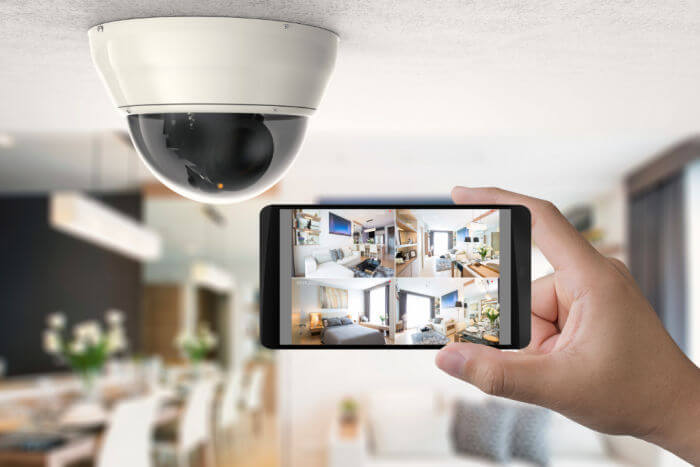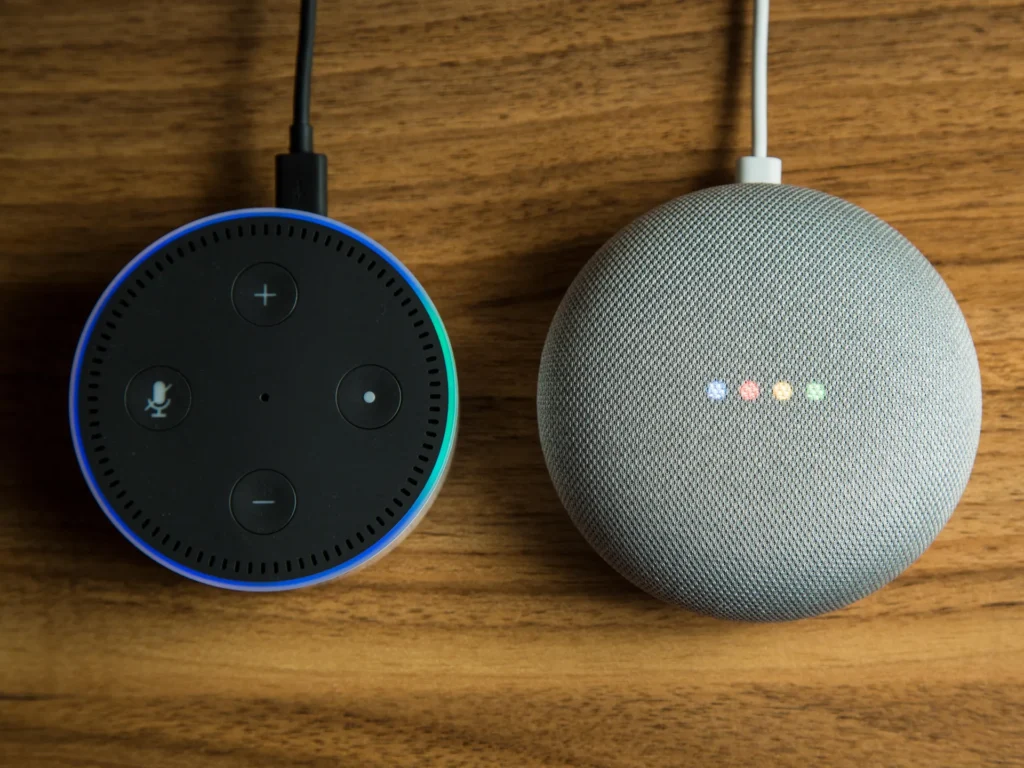Exploring Wireless Home Security
When it comes to safeguarding your home, a wireless home security system offers a flexible and convenient solution. These systems have gained popularity for their ease of installation and the ability to integrate seamlessly with smart home devices. While they provide a range of features, such as remote monitoring and mobile alerts, understanding the benefits, costs, and top brands is crucial for making an informed decision. In this article, we will explore the advantages of wireless systems, and the potential costs involved, and highlight some reputable brands to consider for your home security needs.
What Is a Wireless Home Security System?
The key difference between wired and wireless security systems is their method of connection and communication. Wired home security systems rely on the home’s electricity and landline phone or ethernet cable. These systems use physical wires running through walls or floors to connect cameras, making installation more complicated. If you move, you will likely leave the wired security system behind for the new homeowner.

Wireless systems, on the other hand, use batteries and communicate with cameras and control panels or apps via Wi-Fi. These cameras don’t require wires, which makes them easier to position, install, and move. Many wireless system users appreciate the fact that they can take the system with them if they move to a new home.
Wired cameras communicate with each other using wires. They record and save footage digitally to a local or online storage option via an ethernet cable.
Wireless cameras communicate with each other using Wi-Fi or radio frequencies, which are more easily disrupted. They save footage wirelessly through the same means, without needing to be within reach of an ethernet cable. However, they must be within range of a strong Wi-Fi signal.
How Much Does a Wireless Home Security System Cost?
Prices vary for wireless home security systems. For example, Blink allows you to buy cameras individually; a single indoor mini camera costs $35, while a single outdoor floodlight camera can cost over $140. Blink lets you choose options according to your budget.
SimpliSafe offers a more comprehensive system. You can purchase a package with sensors for your home’s windows and doors for $200 to $500 depending on your needs. This wireless system offers more than security cameras. You can build a security camera package yourself with outdoor cameras starting at $180 and video doorbells at $170.
SimpliSafe charges a monthly fee for professional monitoring. The cost ranges from 33 to 93 cents per day for that feature, which amounts to $120 to $340 per year.
One cost-saving factor of wireless systems is that you likely won’t need to hire someone to install them for you, as it’s a simple job. If you prefer professional installation, however, you can expect the cost to vary based on the size of your system.
Fortunately, with so many options on the market, there’s a wireless system that’s perfect for your needs and budget.
Benefits of Wireless Home Security Systems
There are tons of positive attributes of a wireless home security system that its wired counterpart simply doesn’t offer. Here’s a look at some of the most significant factors.

Easy to Install
Most wireless home security systems are DIY-friendly, unlike wired systems. They include mounting hardware and clear instructions, plus many online tutorials from brands. To set up the system, simply mount the cameras within reach of Wi-Fi or radio signals and turn them on. If necessary, a Wi-Fi extender can help the cameras reach your entire home. Overall, this is much easier than a wired system, which must connect to your electrical source and internet. Plus, wireless systems don’t have wires to hide. If you need help with installation, professionals can assist for a fee, usually a few hundred dollars based on your system’s size.
Simple to Use
Today’s wireless options integrate with smartphone apps and home hubs. They are user-friendly and sync easily with your existing technology. Their intuitive design makes home monitoring easy to set up and use right away.
Affordable
While many wired security systems offer comprehensive packages, most modern wireless options let you buy individual pieces. For instance, you can purchase cameras and connect them to a hub if you need just one or two. Additionally, you can add features later to ensure everything works together. For example, you can start with a smart doorbell and add window sensors later. Many of these options don’t require contracts or cloud storage fees, so you won’t face extra charges after purchasing the equipment. However, pricing can vary by brand.
Portable
If you move between homes or apartments, you can easily remove and relocate your wireless cameras. In contrast, wired systems require cutting into walls and floors to hide wires. With wireless cameras, you can take them with you, saving the cost of reinvesting.
Pros and Cons of Wireless Home Security Systems
Choosing the best wireless security camera system might seem overwhelming at first with so many choices. Here’s a quick list of some pros and cons for your wireless home security system, which we’ve touched on and will look at in more detail.
-
Pros
- Easy to install and use
- Affordable equipment cost
- Portable
-
Cons
- Fees for storage, and disruptions are common
- Not professionally monitored
- Batteries require a watchful eye
Pros of Wireless Home Security Systems
- Easy to Install and Use: Wireless home security systems are designed for simplicity. They come with user-friendly instructions and mounting hardware. Most homeowners can set them up without professional help. Installation usually takes just a few minutes. Intuitive mobile apps are often provided for monitoring and managing security.
- Affordable Equipment Cost: Wireless security cameras typically have a lower upfront cost. They often require no expensive installation services. Budget-friendly options are available from many brands. Users can add cameras or sensors over time as their budget allows.
- Portable: Wireless systems are portable due to their lack of wiring. Cameras can be easily moved to different locations. This flexibility is useful for renters or those who change their home layout. If moving, the system can be taken along.
Cons of Wireless Home Security Systems
- Fees for Storage and Disruptions Are Common: Many wireless systems require cloud storage for footage. Monthly fees are often charged for extended storage. Wireless systems depend on internet connectivity. If Wi-Fi fails, recording and alerts may not function.
- Not Professionally Monitored: Many wireless options do not include professional monitoring. Alerts are sent directly to the homeowner. Immediate assistance from a monitoring center is not available. This places the responsibility on the homeowner.
- Batteries Require a Watchful Eye: Wireless cameras rely on battery power. Regular checks are needed to monitor battery life. If batteries die, cameras will not work. Alerts for low batteries are often provided, but maintenance is required.
Best Wireless Home Security Brands
Here’s a brief look at some of the most popular wireless security system brands and what they offer.
Blink
Blink lets you purchase cameras, doorbells, and floodlight cameras individually or in packs, allowing for a fully customized home security system. This is one of the few systems that doesn’t require a monthly fee for access to stored video clips. It’s an affordable and user-friendly option that is easy to install.
SimpliSafe
SimpliSafe’s wireless home security system not only offers video monitoring but also features an 85-decibel alarm that sounds when a breach is detected by its sensors. Additionally, similar to many wired systems, SimpliSafe’s paid app provides monitoring of your property, allowing for faster access to first responders in the event of an emergency.
Vivint
Vivint provides home security as well as the best of artificial intelligence when it comes to running your smart home, offering integration with technology such as thermostats, lights, and door locks. The Vivint hub allows easy control of all connected devices as well as weather alerts.
Trusted brands like ADT, known for their wired home security systems, also now offer wireless systems.
For a more detailed comparison of wireless home security systems, visit our best brands page and compare.
Are Wireless Home Security Systems More Popular Than Wired Systems?
Wireless home security systems are preferred for their ease and simplicity of use. Most homeowners can install their wireless cameras in a matter of minutes, and their intuitive, user-friendly apps make it easy to enable or disable the system and monitor clips with alerts sent directly to your phone. Although wired systems offer web-based integrations, they are more difficult to install and not ideal for those who live in apartments or move frequently.
Additionally, wireless systems are relatively affordable compared to wired options. You can easily mount them just about anywhere, quickly sync them to your home’s Wi-Fi, and power them with batteries to get your system up and running fast.
In contrast, wired systems typically require professional installation and are less flexible for adjustments if you decide to make a change.
Are Wireless Home Security Systems Compatible with Other Smart Home Systems?
Your wireless security system will likely work with its proprietary hub, or it will easily integrate with the most common home hubs on the market, such as the Amazon Echo Dot or Google Home. Once synced, you can control these devices through one central app or by voice control. This makes it easy to monitor your property and stay apprised of crucial alerts.
DIY or Professional Installation?
While professionals can assist with installing your wireless home security system, you typically won’t need their help. These systems are designed for simple, user-friendly installation and come with mounting hardware and clear instructions. In most cases, all you need is a screwdriver or drill. For some installations, you might even use adhesives or choose tabletop cameras.
In addition, installing wireless systems is much easier than wired options. Wired systems require you to tap into your home’s electrical circuits and stay within reach of Ethernet cords, which complicates the installation process.
Most wireless systems need you to mount your cameras with a drill and screwdriver. However, many indoor systems are tabletop cameras that require no installation at all. With a bit of time and patience, you can set up your wireless home security system quickly.
If you’re unsure how to start the installation, don’t hesitate to seek help. While you can install it yourself, consulting with a professional for guidance is a good idea if you feel hesitant. You may find that a professional installation is more affordable and easier than you thought.
Compare top-rated home security pros in your area.
Read real homeowner reviews, explore qualifications, and view promotions. Modernize makes it easy to browse professionals and find one that will be perfect for your project.






